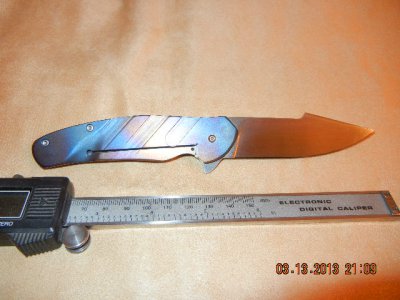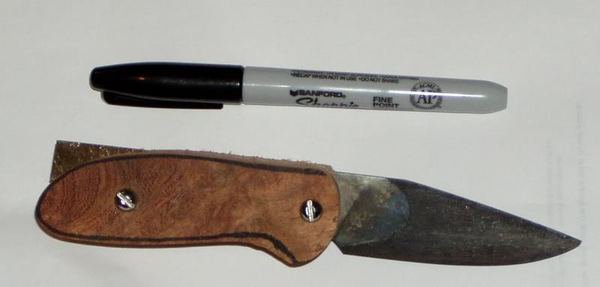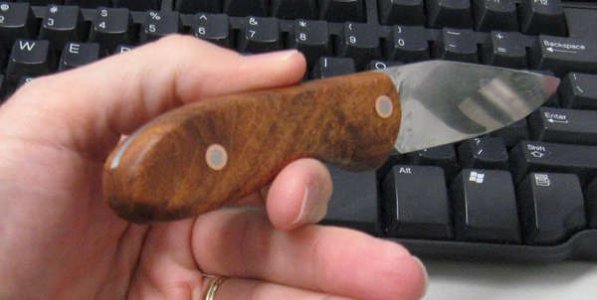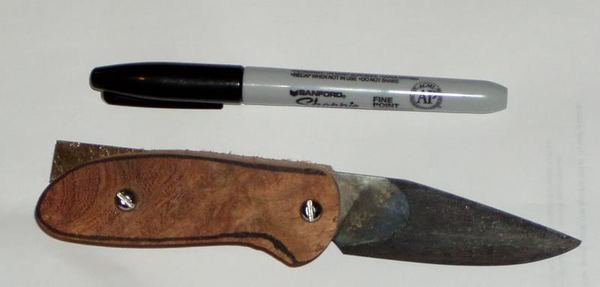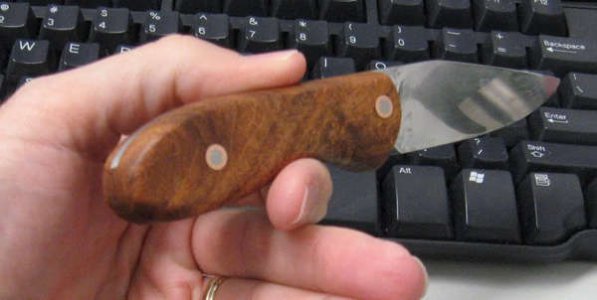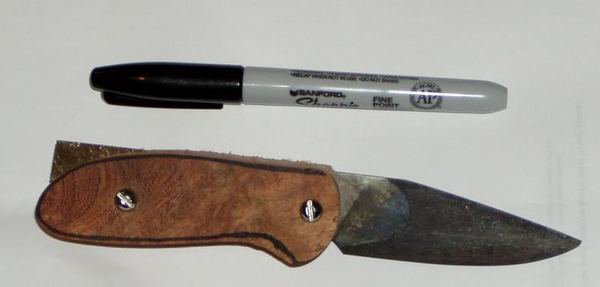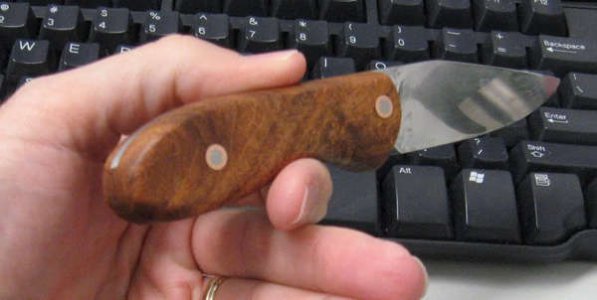I've made blades of O1 before, really like the steel for ease of heat treat and good edge holding. I'd like to try a differential temper on a kitchen knife to go for a harder edge, but not sure how to go about it. First inclination is to quench per usual, then protect the cutting edge with clay or ??, then torch or oven temper the spine. I'd like the edge to stay around 60-61 Rc, and draw the spine back down to 56-57. I think I could leave the whole blade at 60 without issue, but would like to try something new. Would also be cool to end up with a temper line or hamon after polishing, but that's not the main reason. Any ideas?
Patrick
Patrick


